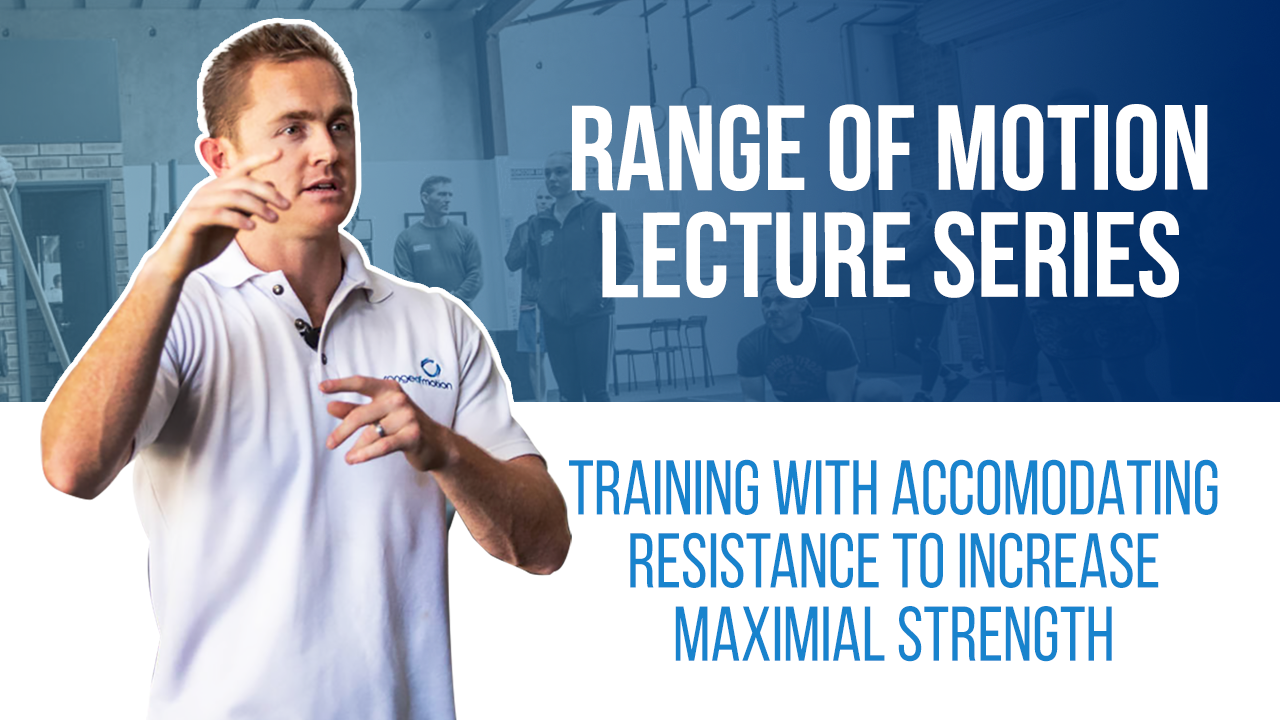Transcribed from video:
– A really good way of doing this is by using some accommodating resistance, which can be done through chains or bands. Those of you who have done some work with me in the past know that I programme a lot of this as part of your power-lifting training. So, accommodating resistance is basically where, again, if you use a deadlift as an example, there’ll be a different load on the bar, a different amount of force you’re having to produce at the start and the end of the deadlift. So, for example, if we use bands, so you put bands over the deadlift, either from one end of the bar to the other and stand on it, or, preferably, with pins or on a platform. At the bottom, when you’re set up, the bands aren’t providing any tension to the bar. So you want to be at about 40 percent of max, or your max deadlift. If you deadlift 200 kilos, you want 80 kilos on the bar. So you set up there on the ground. The first centimetre of the deadlift you’re lifting 80 kilos or 40 percent. As you lock it out, you want to then be at that 65 percent that we talked about, where it’s about where you get peak power. So as you go through the lift, it becomes heavier, as you have more tension on the band, the weight becomes more. So why do we want to do that? In a lot of the movements we do, there’s a certain range where we start to switch off because it becomes easy. So, everyone knows when you’re squatting you get that sticking point, if you make it past there, you’ve already started celebrating your new PB. Yeah, you’re doing your straight press or your bench. You get to a point, and you know you’ve got it. At that point, we start to let our muscles turn off a little bit. That means that we lose a training effect. We lose some end of range training. We lose our ability to really extend our hips hard, to lock hard, to explode out of a squat. So if all you ever do is train heavy, slow, max effort work, you’re not going to be getting a lot of benefit for that explosive, power-based work, which, for a population of, effectively, multi-sport athletes, this becomes very important. So this accommodating resistance, not only do we use bands, but we can do explosive, plyometric-based stuff, like jumping. So, let me give you the example of a jumping, high-bar, back squat using bands. We know, at the bottom of the rep, the bands are effectively adding zero. So we’ve got 40 percent of our max on the bar. At the top of that, they’ve added 25 percent. Now the way that I’ve actually calculated these is just getting a set of analogue bathroom scales, and standing on them and seeing what weight each band adds at various points. So I know that, at this overhead point, each millimetre of band thickness is giving half a kilo worth of loading. So, if we’ve got five mil, it’s two and a half kilos. If it’s ten mil, it’s five kilos, et cetera. So, the bench, for overhead pressing, for squats and for dead lifts, I’ve calculated, based on the average-sized person, what band they should be using to get this. Alright, and if anyone’s interested in that, I’ve got those charts, which I can send through to you. Email me or post in the group, when we get that set up. So let’s look at a jumping, high-bar, back squat. At the bottom, with no band assistance, 40 percent of your max, when you come to full extension, an extra 25. Now we’ve got 65 percent of your max, plus we jump as well. And because of the jumping, high-bar, back squat, a range that we would normally neglect, where you switch off ’cause you know you’ve made it, we’re forcing you to work harder there, to lift more, to explode out of that squat, which gives you explosiveness, it gives you speed, which means that, because power equals force times distance over time, the time is less, the power is more, okay? Really important to include some of this, who includes–





